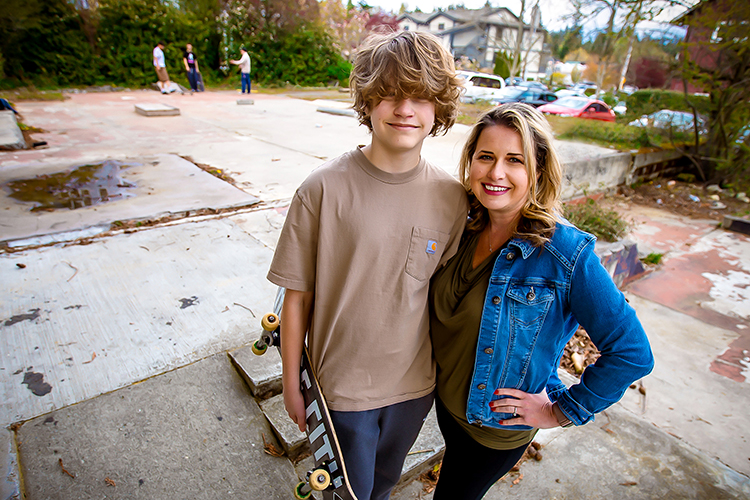Andy Caro has been skateboarding almost since the invention of the wheel – the polyurethane wheel, anyway. The dean of Bainbridge Island skateboarding got his first board in 1977, not too long after the introduction of softer, smoother-riding wheels revolutionized “sidewalk surfing” and set in motion its course from punk-rock subculture to Olympic sport.
Caro and friends built the island’s first skateboard ramp at Lynwood Center (the neighbors hated it), the first full-vertical ramp at a local dentist’s house (the dentist’s son skated), and eventually a giant wooden half-pipe at Strawberry Hill Park. A decade after that was torn down, Caro made the drawings for the concrete skate bowl that replaced it.
“There were no skaters here,” Caro recalls of the early days. “Kids up here didn’t even know what Vans (skating sneakers) were until ‘Fast Times at Ridgemont High’ came out.”
Skateboarding waxed and waned, but there were always kids wheeling around in the margins somewhere, on sidewalks or in public squares.
When the Strawberry Hill skate bowl opened in 2001, you could sense a tectonic shift. Skaters came from all over to test their skills against the challenging basins and gravity itself. Bainbridge Island skateboarding was on the map. One of the first concrete parks in Washington, it’s still regarded as one of the best these 20 years on.
But times change, and with them, skateboarding styles. So under the mantra “Dream It. Draw It. Build It. Skate It,” the Bainbridge Island Parks Foundation, Bainbridge Metro Parks and local volunteers are partnering to refurbish the skate bowl and grow the facility into a greater, more inclusive Strawberry Hill Skatepark.
The expanded park will introduce new “street skate” features, reflecting the sport’s evolving forms and serving a wider range of skating styles, experience and ability.
The “Dream It” phase begins Tuesday, April 19, when the Park District hosts a public meeting on the project, at 6 p.m. at Strawberry Hill Center. A team from Grindline, a renowned Seattle skatepark design firm with more than 300 parks to its credit worldwide, will hear from skaters and discuss possibilities.
The general plan is to add an additional 7,000-8,000 square feet of new space next to the present bowl for skateboarding, roller and inline skating, and scooters.
The Parks Foundation will launch a fundraising campaign this summer as Grindline’s design takes shape and costs firm up.
“I’m so thankful to the Park District, that they’re providing this opportunity for people of all ages and all backgrounds to try out a new sport,” says Jessica Perkins Miller, volunteer chair of the skatepark committee. “It’s now an Olympic sport, and it’s in our backyard.”
The project comes as the Park District is reimagining Strawberry Hill Park as a whole, with new bike park and dog park uses also planned.
FROM SKATE BOWLS TO STREET SKATING … AND BACK
If Andy Caro is skateboarding’s historic face on Bainbridge Island, kids like Grant Miller are its present and future.
Miller, 14, took up skateboarding during the pandemic to stay active and connected outside.
“I couldn’t really do much, so I just decided to skateboard. A lot of my friends started skating,” he says. “I stuck with it, they didn’t… It’s always been fun for me to ride.”
Jessica Perkins Miller, who now chairs the skatepark committee, shuttled her son as far as Lopez Island to experience skate parks around the Puget Sound region.
A common thread among the newer parks: rolling terrain that’s more gentle than the classic bowl, with a greater range of obstacles upon which skaters can (in the parlance) “kickflip,” “grind” and “ollie.”
“The skate bowl can be intimidating,” Perkins Miller says. “Street skating is something that you can slowly grow into. It’s more manageable, and kids are doing it everywhere.”
It’s an inclusive sport, she adds, not requiring a lot of equipment and so welcoming to all, regardless of means. Perkins Miller estimates that about 200 island kids now skateboard.
Street skating as a form has been propelled by development of the “ollie,” a physics-defying stunt in which a rider launches into the air without the aid of a ramp – improbably dragging the board skyward with them, as if was velcroed to their shoes (it’s not) – often landing on higher planes like benches or planters.
Any public space with an expanse of smooth concrete is now a skatepark – municipal plazas, public pavilions, parking areas – but often to the annoyance of authority figures and neighbors. This is true at “the Burndown,” a vacant lot in Winslow where skaters have gathered off and on for several years.
The Strawberry Hill Skatepark will concentrate these features – stairs, ledges, handrails, tables, inclined planes – and other elements typical of the urban environment, in a sanctioned space. The historic bowl will be preserved and refurbished, uniting Bainbridge skating past and present.
Indeed, there are skateparks everywhere now, but the Bainbridge Island bowl still draws skaters from all around the region, probably the world – it’s still that good.
Caro still skates the bowl with an older crowd who call themselves “Oh My Back.” He now sees a merging of the two forms – old-school “transition” skating (anything that involves a curved wall), and the newer street styles that can turn even a flat parking lot into three-dimentional space.
As to the new generation of skaters, you could try to reduce them to a single type, as adults once did with Caro and his friends – outsiders, willful non-conformists, the kids who don’t fit “traditional” molds.
Or you could celebrate their individuality, and marvel at the skill it takes to coax a wooden board high into the air with the soles of your feet, flip it in crazy directions, and come down in motion and with your ankles intact.
Even when you watch an ollie up close, you probably can’t figure out how it’s done. And if a kid can win a gold medal in skateboarding now, how “outsider” can it really be?
“It’s finally gotten there,” Caro says, reflecting on the sport he helped grow on Bainbridge Island over the decades. “I don’t think we ever thought that would happen. And the level of skateboarding is way beyond what we thought was physically possible. It’s fantastic.”
SKATERS GONNA SKATE – Bainbridge Island Metro Park & Recreation District hosts a public meeting on the proposed Strawberry Hill Skatepark expansion, 6-9 p.m. Tuesday, April 19 at Strawberry Hill Center. Grindline of Seattle will present options for new “street skate” features, and the Parks Foundation will discuss the planned fundraising campaign. Take the skatepark survey here.

At top: New skateboarder Grant Miller and mom Jessica Perkins Miller, chair of the Strawberry Hill Skatepark committee. Above: Andy Caro at the Strawberry Hill Park skate bowl.
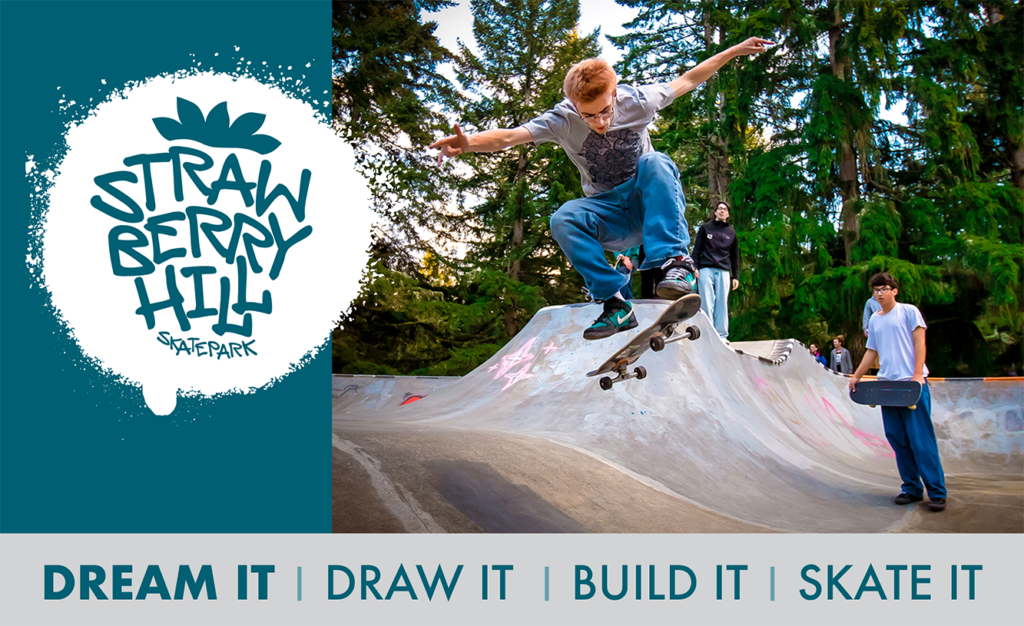
Strawberry Hill Skatepark campaign logo by Gary Bedell, Creative Director and campaign committee member.
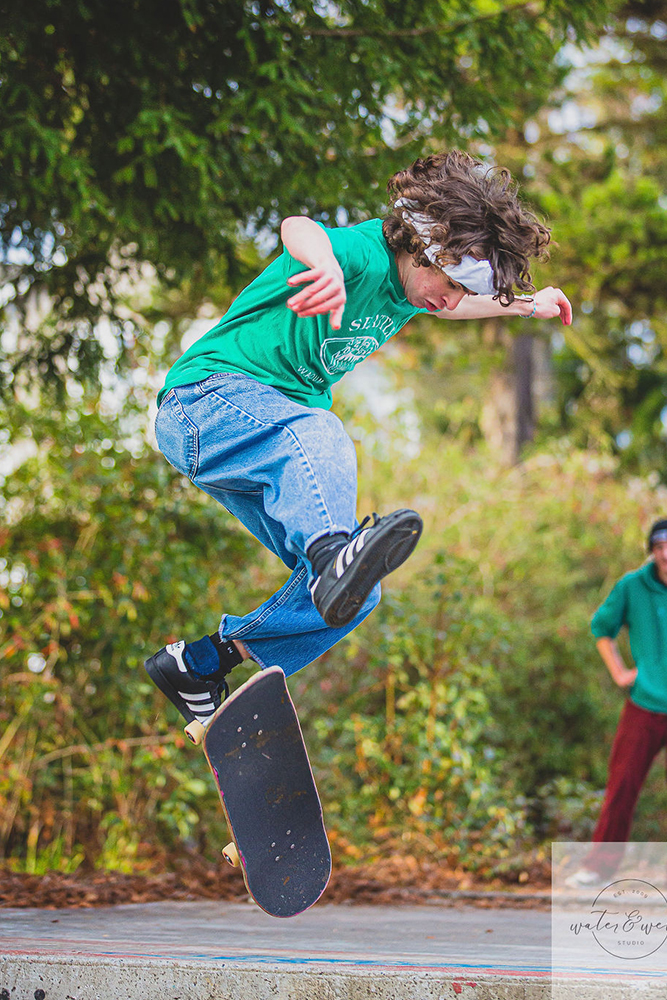
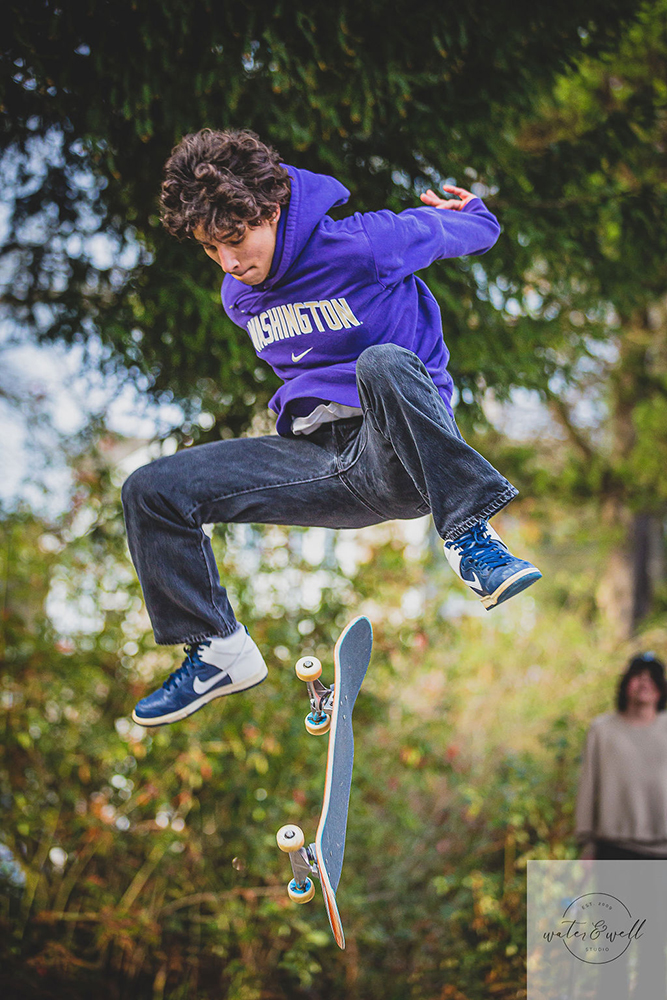
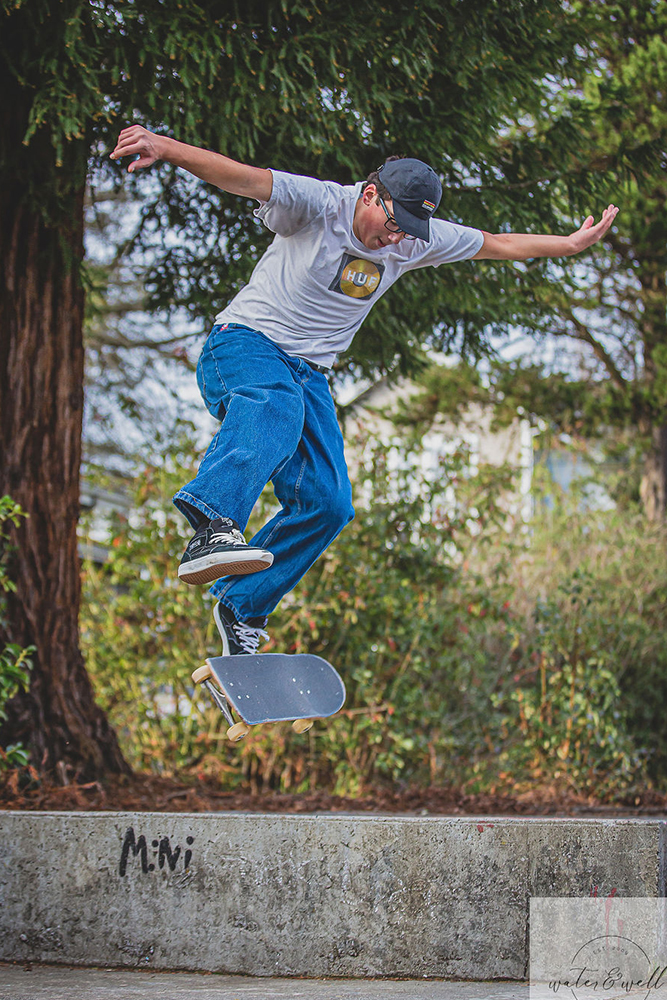
Bainbridge Island skaters practice the art of the “ollie.” Photos courtesy of Water & Well Studio.



